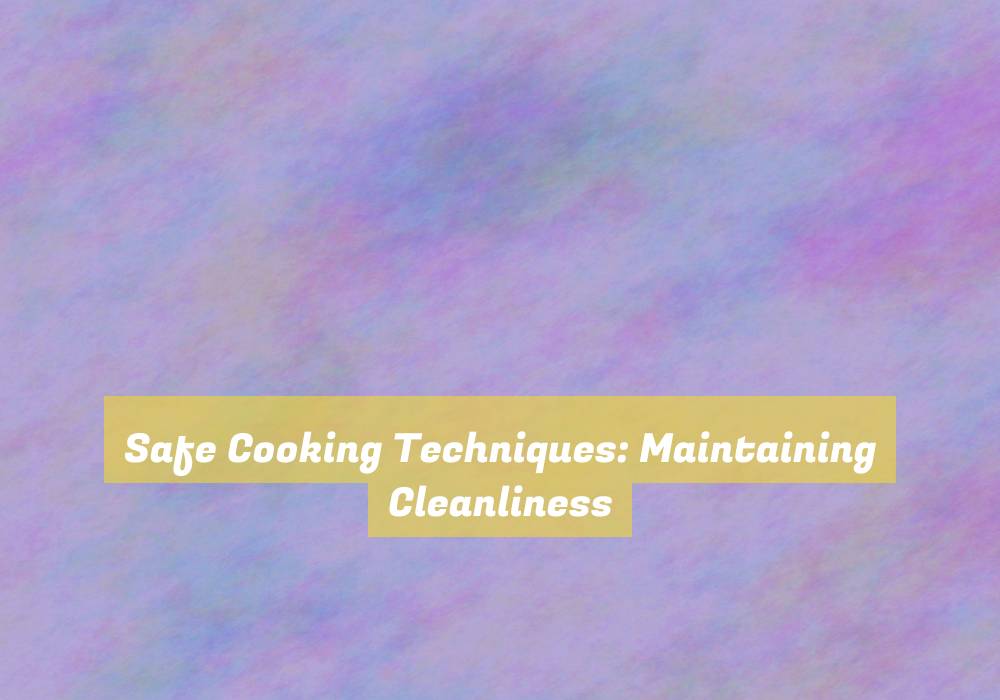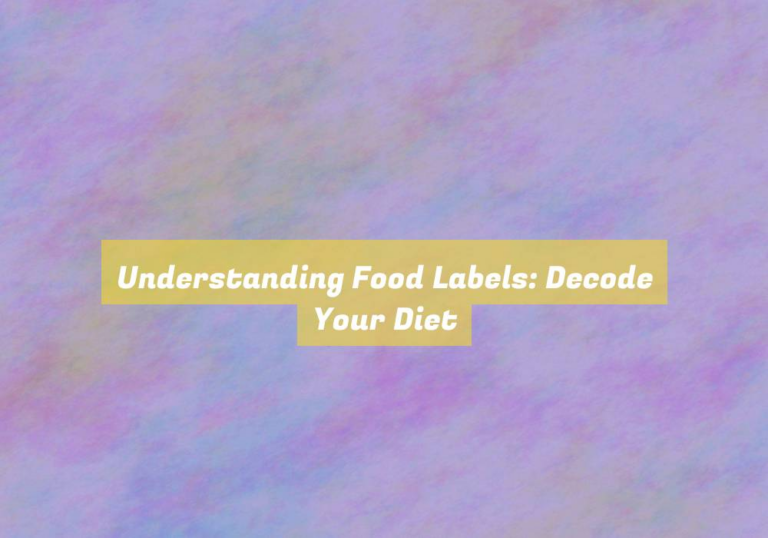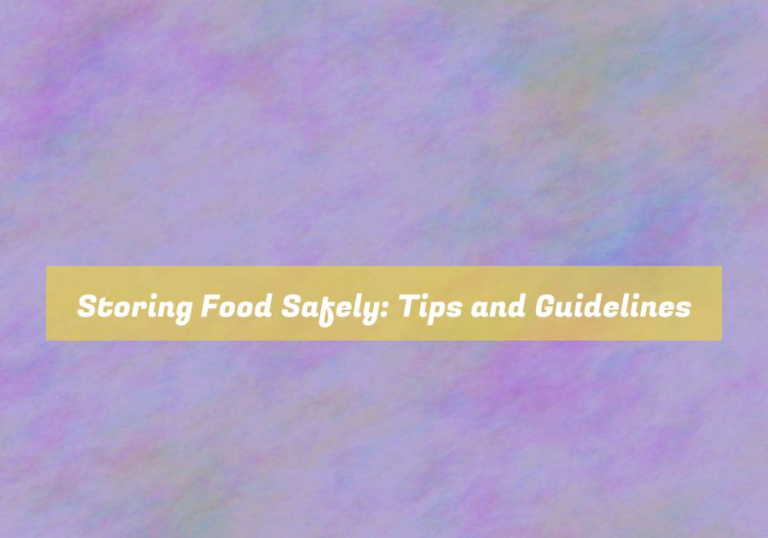Safe Cooking Techniques: Maintaining Cleanliness
When youG??re preparing a meal, have you ever thought about the potential risks of cross-contamination in the kitchen?
Imagine cutting raw chicken on a cutting board and then using the same board to chop vegetables without cleaning it in between.
The consequences of improper cleanliness in the kitchen can be detrimental to your health and the health of your loved ones.
But fear not, there are simple yet crucial techniques that can help you maintain a clean and safe cooking environment.
By following these guidelines, you can ensure that your kitchen remains a safe space for food preparation and consumption.
Importance of Cleanliness
Maintaining a high standard of cleanliness in the kitchen is essential to prevent food contamination and ensure the safety of your meals. By keeping your kitchen clean, you minimize the risk of harmful bacteria and germs infiltrating your food. Cleaning surfaces, utensils, and equipment before and after each use is crucial. This simple practice can prevent cross-contamination and protect you and your family from foodborne illnesses. Additionally, regularly washing your hands with soap and warm water, especially before handling food, is imperative. Proper hand hygiene is one of the most effective ways to avoid spreading germs and bacteria to your meals.
Furthermore, maintaining a clean kitchen environment extends beyond just the cooking area. Storing food properly, regularly cleaning your refrigerator and pantry, and disposing of expired items can significantly reduce the likelihood of food contamination. ItG??s also important to keep an eye on the cleanliness of kitchen towels, sponges, and cutting boards, as these items can harbor harmful microorganisms if not properly maintained.
Hand Hygiene
To ensure the safety of your meals and prevent food contamination, itG??s essential to prioritize proper hand hygiene in the kitchen. Before handling any food, always wash your hands with soap and warm water for at least 20 seconds. This simple step can significantly reduce the risk of spreading harmful bacteria and viruses to your food.
Remember to wash your hands after handling raw meat, poultry, seafood, or eggs to avoid cross-contamination. Additionally, itG??s crucial to wash your hands after using the restroom, touching your face, handling pets, or handling any uncooked food items.
In situations where soap and water arenG??t available, using an alcohol-based hand sanitizer can be an effective alternative. However, itG??s important to note that hand sanitizers arenG??t as effective as hand washing when hands are visibly dirty or greasy. Be sure to rub the hand sanitizer all over your hands until theyG??re dry.
Maintaining proper hand hygiene is a fundamental aspect of safe cooking practices. By making hand washing a routine part of your kitchen activities, you can significantly reduce the risk of foodborne illness and ensure the safety of the meals you prepare.
Surface Sanitization
Using a disinfectant spray or wipes, thoroughly clean and sanitize all food preparation surfaces before and after use. This step is crucial for preventing the spread of harmful bacteria and ensuring the safety of your meals.
When sanitizing surfaces, pay special attention to areas that come into contact with raw meat, poultry, or fish, as these can harbor dangerous pathogens.
After cleaning the surfaces with soap and water, apply the disinfectant and let it sit for the recommended contact time specified on the product label. This contact time is important as it allows the disinfectant to effectively kill any remaining germs.
Additionally, remember to regularly replace sponges and dishcloths used for cleaning surfaces, as they can become breeding grounds for bacteria if not properly maintained.
By making surface sanitization a routine part of your cooking process, you can significantly reduce the risk of foodborne illnesses and create a safer environment for food preparation.
Always prioritize cleanliness to ensure the health and well-being of yourself and those youG??re preparing meals for.
Safe Food Handling
Practicing proper food handling is essential for ensuring the safety of your meals and preventing foodborne illnesses.
Start by washing your hands with soap and water before and after handling food to prevent the spread of bacteria.
When preparing raw meat, poultry, or seafood, use separate cutting boards and utensils to avoid cross-contamination with other foods.
ItG??s crucial to store perishable items in the refrigerator at or below 40-?F (4-?C) and to refrigerate leftovers promptly.
When defrosting food, do so in the refrigerator, under cold running water, or in the microwave, never at room temperature.
Additionally, make sure to cook food to the appropriate internal temperature using a food thermometer to kill harmful bacteria.
Remember to keep hot foods hot and cold foods cold to prevent bacterial growth.
Lastly, be mindful of expiration dates and avoid consuming expired products.
Conclusion
In conclusion, maintaining cleanliness is essential for safe cooking.
By practicing proper hand hygiene, surface sanitization, and safe food handling, you can prevent the spread of harmful bacteria and contaminants in your kitchen.
Remember to wash your hands frequently, keep surfaces clean, and handle food with care to ensure that your meals are prepared in a safe and healthy environment.






I completely relate to your point about cross-contamination—it’s often the little things we overlook that can have the biggest impact on our health. I remember a time when I was cooking dinner for friends and accidentally used the same cutting board for both raw meat and veggies. Thankfully, we caught it just in time! It really made me rethink my food prep habits.
Your experience really highlights an important aspect of cooking that often flies under the radar. It’s those little choices, like the cutting board scenario, that can cause significant issues if we’re not careful. It’s interesting how we don’t always think about things like cross-contamination until we’ve got a near-miss or an actual mishap. Cooking is such a tactile, engaging experience, and it’s easy to fall into patterns without questioning our methods.
Your insights on cross-contamination really hit home for me. I think many of us have experienced the rush of meal prep, where we might overlook some of the cleanliness basics just to get dinner on the table. It’s so easy to make that mistake of using the same cutting board for different ingredients without a second thought.